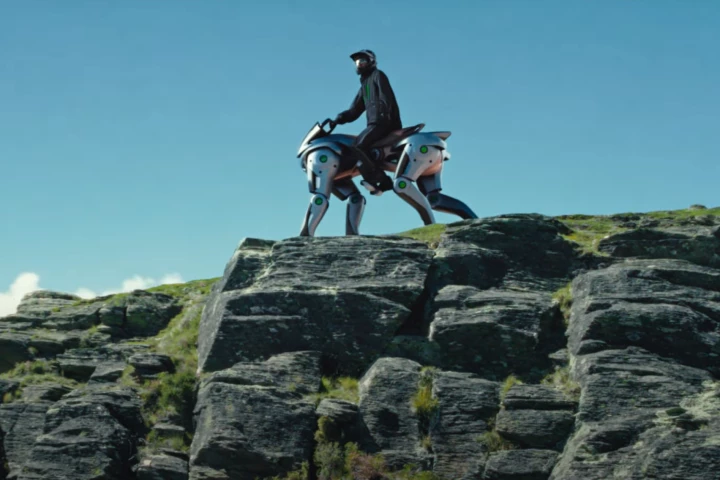Former bike shop owner Fabrizio Cross once asked himself, what would it take to get more people out of their cars and onto bicycles? His answer was "A bike that could do more, go farther, and take less effort." That vehicle now exists, in the form of the Electrom LEV (light electric vehicle). Although it's currently a one-off, he does hope to put it into production.
Cross started work on his eye-catching creation 20 years and four prototypes ago. The present incarnation has been on the roads of the Canadian city of Victoria, British Columbia since April 2016. In that time, he's racked up over 4,000 km on it (2,485 miles). It's a daily commuter, used for everything from getting groceries to ferrying his kids around in a sort of "rumble seat" in the back.
Besides its unique looks, though, one of the things that really distinguishes the Electrom is its dual drivetrain.
At speeds up to 10 km/h (6 mph), the rider's pedalling power goes directly to the rear wheel via a long chain drive. At higher speeds, however, that chain drive starts freewheeling, allowing the pedalling power to go to a generator. The generated electricity supplements the electricity from a battery that powers a 500-watt rear hub motor.
This means that once they get going faster, the rider's cadence doesn't determine the speed of the vehicle. They can just pedal at a comfortable rate – around 80 rpm – and use a throttle to control the speed. No shifting of gears is necessary.
The system is explained in more detail, in the following video.
The Electrom is currently electronically limited to a top speed of 32 km/h (20 mph), which is the electric-assist bicycle speed limit in British Columbia. Travelling at that speed with a single 72V/20Ah battery, it has a range of approximately 80 km (50 miles) – needless to say, that depends on how much pedalling the rider does, and how fast they do it.
It's made from a variety of materials, including carbon fiber, fiberglass, Kevlar, aircraft plywood, and even hickory wood. "The production frame will be made of aluminum and possibly carbon fiber," Cross tells us. "I used the materials I did for the prototype because I was able to work with them in my garage."
Some of its other features include 100 liters of rear cargo space (if a kid isn't being carted around back there), a swing-away front fairing, and a full LED lighting system with turn indicators.

Fabrizio hopes to launch a crowdfunding campaign sometime next spring (Northern Hemisphere), to raise production funds for the commercial version of the vehicle. If all goes according to plan, it will be sold as a partially-assembled kit for no more than US$8,000 – perhaps a lot less, depending on sales volume.
"I come from a long line of mechanics/inventors," he says. "My father ran a country mechanics shop and built many innovative things to help the farm function. Watching him made me understand that it is possible for anyone to build something new, they just need the idea, time and materials."
You can see a bit more of the Electrom in action, in the video below.
Product page: Electrom LEV








